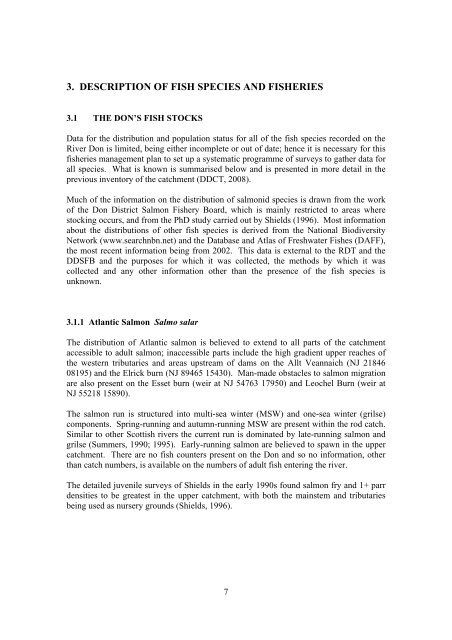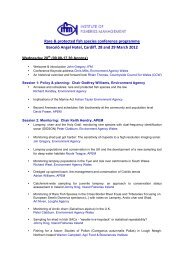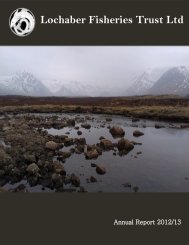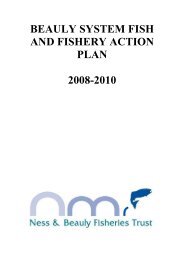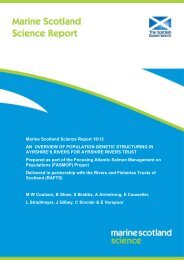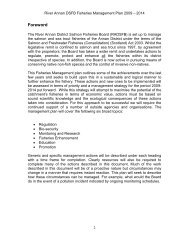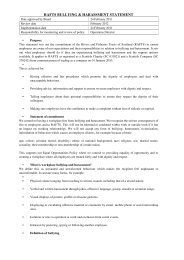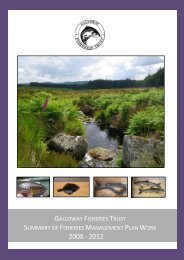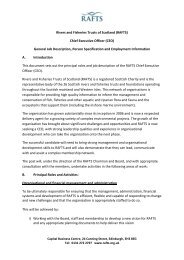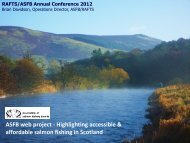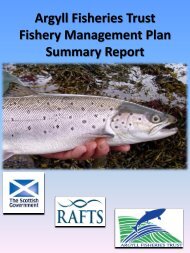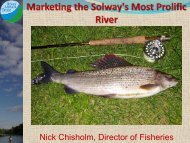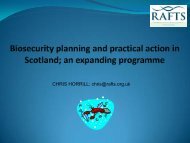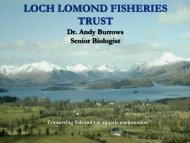You also want an ePaper? Increase the reach of your titles
YUMPU automatically turns print PDFs into web optimized ePapers that Google loves.
3. DESCRIPTION OF FISH SPECIES AND FISHERIES3.1 THE DON’S FISH STOCKSData for the distribution and population status for all of the fish species recorded on theRiver <strong>Don</strong> is limited, being either incomplete or out of date; hence it is necessary for thisfisheries management plan to set up a systematic programme of surveys to gather data forall species. What is known is summarised below and is presented in more detail in theprevious inventory of the catchment (DDCT, 2008).Much of the information on the distribution of salmonid species is drawn from the workof the <strong>Don</strong> District Salmon <strong>Fishery</strong> Board, which is mainly restricted to areas wherestocking occurs, and from the PhD study carried out by Shields (1996). Most informationabout the distributions of other fish species is derived from the National BiodiversityNetwork (www.searchnbn.net) and the Database and Atlas of Freshwater Fishes (DAFF),the most recent information being from 2002. This data is external to the RDT and theDDSFB and the purposes for which it was collected, the methods by which it wascollected and any other information other than the presence of the fish species isunknown.3.1.1 Atlantic Salmon Salmo salarThe distribution of Atlantic salmon is believed to extend to all parts of the catchmentaccessible to adult salmon; inaccessible parts include the high gradient upper reaches ofthe western tributaries and areas upstream of dams on the Allt Veannaich (NJ 2184608195) and the Elrick burn (NJ 89465 15430). Man-made obstacles to salmon migrationare also present on the Esset burn (weir at NJ 54763 17950) and Leochel Burn (weir atNJ 55218 15890).The salmon run is structured into multi-sea winter (MSW) and one-sea winter (grilse)components. Spring-running and autumn-running MSW are present within the rod catch.Similar to other Scottish rivers the current run is dominated by late-running salmon andgrilse (Summers, 1990; 1995). Early-running salmon are believed to spawn in the uppercatchment. There are no fish counters present on the <strong>Don</strong> and so no information, otherthan catch numbers, is available on the numbers of adult fish entering the river.The detailed juvenile surveys of Shields in the early 1990s found salmon fry and 1+ parrdensities to be greatest in the upper catchment, with both the mainstem and tributariesbeing used as nursery grounds (Shields, 1996).7


